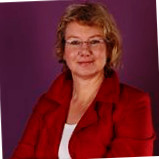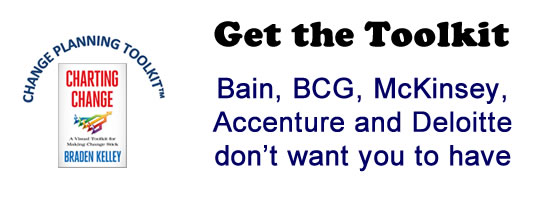Business Innovation – Creating Team Cohesion

Team cohesion is what will pull you through in turbulent times.
I always say there are three ways a team can survive – as a structure, as a team or as an idea. For example, Â when we started the TA magazine it only existed as an idea in our minds. We dreamed to create a professional transactional analysis magazine for practitioners. Til that time there was a monthly newsletter for the 300 members of the TA association.
The dream was to create a glossy read by everyone interested in changing behaviour at the individual, group or team level. With a small group of people we started by building a structure to support the dream – boundaries, roles, processes, tools. Then we attracted a group of people who shared the dream and wanted the organization to grow to achieve our purpose. Now two years later we have a glossy TA magazine, bought by a professional publisher and distributed to 50.000 professionals. We publish 80 pages of new Transactional Analysis theory and practice every 3 months.
We could never have achieved this without creating a cohesive editorial team in the process. Any job that requires dealing with complexity in a changing world, requires a cohesive team approach.
Leadership as a relationship is defined as the ability to influence others to achieve breakthrough performance. At this level the focus of leadership is to manage relationships and counteract dysfunctional group dynamics by enhancing cohesion.
On the whole there are three strategies to increase cohesion:
- Increase the interpersonal attraction by:
- Increasing perceived similarity between members.
- Increase the interdependence of shared goals.
- Increase the social interaction in the group.
- Enhance the social identity:
- Create a positive in-group and a negative out-group Minimize intergroup differences and maximize intergroup differences.
- Manipulate social beliefs about mobility, the possibility of change and legitimacy of the group to encourage people to stay.
- Social exchange strategy:
- Increase the reward while lowering the cost of membership, while manipulating the number of options outside the group, the investment of the members in the group and the expectations of the group.
Using this last strategy there are several important implications for increasing cohesion. To increase cohesion it is important for leadership to keep tabs on the rewards versus the cost of membership. Leadership can pursue a strategy based on giving higher than average salaries for instance, and/or lower the cost of membership by introducing flexible work hours, transport options, daycare etc.
Apart from reward and cost, the leadership can influence cohesion through the three mediating factors. For instance you if you are the only employer in that region offering this type of job, there are limited options. If the members have invested a lot of work for a long time in the organization, their investment is large and they will be more reluctant to leave. Lastly if the organization exceeds the previous expectations of members, than people will be more likely to stay.

For example, one of my clients Claas Hungaria is the only large employer offering agricultural engineering jobs in the East of Hungary. People enter the company at a very young age, often passing on the job from father to son, and they stay for lifetime employment. They offer a very good benefits package, compared to Hungarian employers, because their benefits are modeled on the German head office packages. They actively increase the benefits of membership by offering for example sports facilities and transportation to and from work.
RATE: Radical Agile Transformation Exercise
What dysfunctional dynamics do you notice in your organisation?
- Pressure – is there pressure from the environment for instance regulatory changes, increased competition, financial demands?
- Agitation – do you notice any agitation of the members towards the leaders for instance gossip, trying to take over their role informally, lack of trust?
- Intrigue – is there any aggro between members or departments for instance between sales and production, game playing, conflicts?
What measures are being taken to increase a sense of cohesion, teaming and belonging?
“When you are able to increase cohesion in the group you can reduce dysfunctional activities.â€
Bibliography: References & links
Bennett, D. Successful team building through TA. Amacom., 1980.
Berne, E. (1966) Principles of group treatment. New York; Oxford University Press.
Berne, E. (1963) The Structure and Dynamics of Organizations and Groups. A Transactional Analysis Handbook. Grove Press.
Clarkson, P. (1995) The Therapeutic Relationship in Psychoanalysis, Counseling Psychology and Psychotherapy. Whurr Publishers.
Tudor, K. Group counseling, Sage publications, 1999
Lingsma, M. aan de slag met team coaching, uitgeverij nelissen, 1999
Organizational membership: personal development in the workplace, HS Baum, 1990
Affective, normative and continuance commitment: can the right kind of commitment be managed?, RD Iverson & DM Buttigieg, Jn of management studies, 36:3 may 1999
Wait! Before you go…
Choose how you want the latest innovation content delivered to you:
- Daily — RSS Feed — Email — Twitter — Facebook — Linkedin Today
- Weekly — Email Newsletter — Free Magazine — Linkedin Group
 Sari van Poelje has 30 years experience of innovation on the interface of leadership and organizational development, executive coaching and transactional analysis both as a director within several multinationals and as an international consultant. Specialization in creating agile leadership teams and business innovation! She is the author of numerous articles and books on leadership and change.
Sari van Poelje has 30 years experience of innovation on the interface of leadership and organizational development, executive coaching and transactional analysis both as a director within several multinationals and as an international consultant. Specialization in creating agile leadership teams and business innovation! She is the author of numerous articles and books on leadership and change.
NEVER MISS ANOTHER NEWSLETTER!
LATEST BLOGS
How Brexit Has Affected UK E-commerce Businesses
Photo by Zyro on Unsplash The popularity of online shopping was already growing at an impressive rate – and…
Read MoreOvercoming range anxiety: three tips for EV owners
Photo by Jenny Ueberberg on Unsplash In the last few years, electric vehicles (EVs) have become more and more…
Read More


